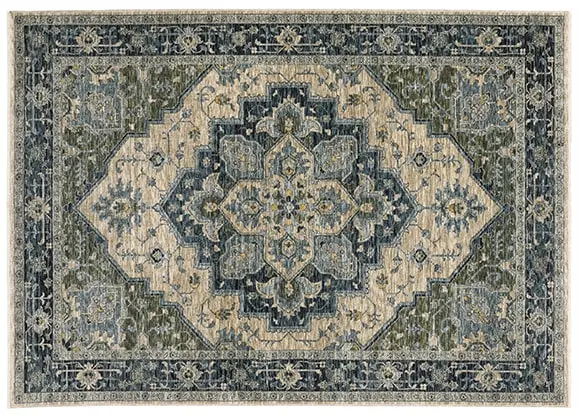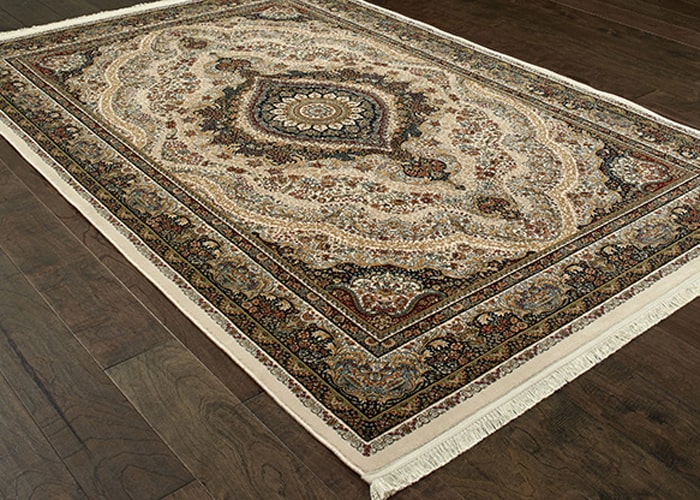Oriental rugs have a fascinating history of thousands of years. Beautiful designs make these rugs valuable. These rugs use traditional weaving methods and historical designs and themes. Only one factor is utilized to distinguish oriental rugs: their pattern. Rugs can be identified through a technical examination of their materials, manufacturing, colors, and pattern. We’ll share valuable tips on oriental rugs to help you with in-detail information about this brilliant rug.
What is an oriental rug?
Oriental rugs are made of natural fibers such as wool, cotton, or silk (Wool is the most popular because of its long-lasting qualities). Each of these rugs has a distinct pattern or design that reflects the region in which it was made.
Oriental rugs, over time, gain in value, making them a better investment than cheaper alternatives. The outcome is a stunning, high-quality rug that will increase in value over time in your house.
Oriental Rug Care Tips?
Wool, silk, and cotton all require different kinds of care. Professional cleaning is recommended for Oriental rugs because of their intricate design, high level of craftsmanship, and high monetary worth.
Oriental rugs need to be cleaned every two to three years on average. Dust can build up in the fibers and eat away at them if you don’t wash them. If you have a lot of foot traffic and a lot of dust on your rug, it will soon start to lose its luster.
Here are a few pointers on how to take care of your rug in between visits from a rug cleaning professional:
- A rubber cushion under the rug can help it last longer and look better.
- To extend the rug’s useful life and improve its overall quality, you should first install a rubber pad below it.
- Just like humans, your rug is an alive creature! It is best not to place goods or pieces of furniture that take up all of the surface space, such as a pot.
- This can cause mold and rot to form on the surface.
- Avoid the vacuum cleaner. Your rug will be damaged by it. Sweeping your rug with a sweeper is the best option.
Oriental Rugs Facts and Details

If you’re an expert, you’ll know that geography and politics have enormously impacted rug-making over time. Genuine Oriental rugs are beautiful and artistic.
Please remember that even if a rug has an Oriental design, it is NOT Oriental if it was not created in the nations listed above.
· Oriental rugs origin
Traditional oriental rugs are hand-knotted only in Asia, a region that encompasses countries such as China, Iran, India, Pakistan, Tibet, and Nepal, as well as Turkey and Russia.
· Oriental rugs piles
There is no hard and fast rule that thicker-pile Oriental rugs are better or worse than thin-pile rugs. The only thing that matters is how the rug appears. A thick rug has a rich, lush, and luxurious appearance, while rugs with thinner piles appear more delicate and refined.
Heriz rugs have a wool pile on a strong cotton substrate. These rugs, with a knot count of 30 to 100 kpsi (knots per square inch), are known for their durability.
- Kashmar rugs are well-made. These rugs have elaborate designs and a high pile.
- Mashad rugs have a high-quality wool pile. The dense pile is braided atop cotton.
- Single-wefted Hamadan rugs. They feature a thick pile composed of cool, high-quality cotton.
· Oriental rug patterns
In the mid-19th century, Tabriz was the center of Persia’s export commerce. Tabriz rugs feature medallions, prayer motifs, and pictorials.
- Kazak rugs are wool and feature vivid, vibrant patterns.
- Kashan rugs include flowery medallion motifs on a red background.
- Heriz, in Iranian Azerbaijan, is famed for enormous medallion-patterned rugs.
- Kerman, Iran, has a rich rug-weaving heritage. Common patterns include floral, medallion, prayer rug, and pictorial.
- Anatolian is a peninsula between the Black Sea and the Mediterranean Sea famed for wool pile rugs. These rugs are named for the Turkish city of Usak.
Floral themes are popular in oriental rugs. Flowers can be realistic, stylized, abstract, or geometric.
Common materials and methods:
- Hand-knit: Yarn warps are vertically joined on a loom. Weavers bind wool or silk tufts around warp strands to make knots. Loose knots produce the rug’s velvety pile.
- Hand-woven rugs might be hand-knotted or flat-woven. A hand-woven rug without knots is a Kilim.
- The length of a rug’s pile depends on how long the strands are cut. Oriental rugs have a low pile, meaning the strands are trimmed short for a velvety feel.
- Wool is a natural and soft rug material. Wool repels dirt and stains.
Silk is one of the most costly textiles. It feels soft and luscious underfoot and is often mixed with wool.
Persian Rugs Are the Most Important Types of Oriental Rugs

Some of the most prominent types of Persian rugs include:
- Tabriz Rugs
One of Iran’s most significant cities produces simple to magnificent rugs. Tabriz, 600km west of Tehran, is the province’s capital and home to the Azari, Iran’s largest minority.
Tabriz’s center location to Azerbaijan, Armenia, and Turkey has fostered trade for ages. Persian rugs are traded.
Tabriz rugs have another name. The knot density per square meter indicates quality. While 90Raj rugs have over a million knots, basic rugs contain 400,000-500,000 knots (40Raj). Denser than most rugs. Tabriz 70Raj with 1,000,000 knots/m2 is rare.
- Shiraz Rug
Shiraz rugs are made of wool. The knot density is 80,000-160,000 per square meter, and most rugs are nomad-made.
Ghaschghai-nomads have a lengthy rug-knotting history in the city. The city’s bazaars’ rugs are sold as Ghashghai or Shiraz.
The city is in Fars’ Persepolis ruins. The city’s culture, atmosphere, and literary history are popular throughout Iran.
Wool Oriental Rugs
Rugs made of wool have a more modern style and are more substantial and more lasting because of their structure. Because of this, they can withstand heavy foot traffic for an extended period. Soil is less likely to get stuck in the fibers, making it simpler to maintain clean. Moreover, wool rugs absorb atmospheric moisture and disperse it from the rug’s vicinity, making it less humid.
Silk Oriental Rugs
Silk is regarded to be one of the most luxurious materials. As a result, it’s more expensive than wool or cotton, which is a downside. If the expense of a silk rug scares you away, consider a rug made from a blend of silk and wool or silk and cotton instead.
Final Thought
Oriental rugs offer beauty to any room with their hand-knotted design. These handmade rugs are a mark of luxury and dignity.
We outlined the essential oriental rug tips for the right choice to warm up your home.
Oriental rugs are among the most expensive home furniture and boost comfort, air quality, and property value. It’s an investment that will endure for years.
